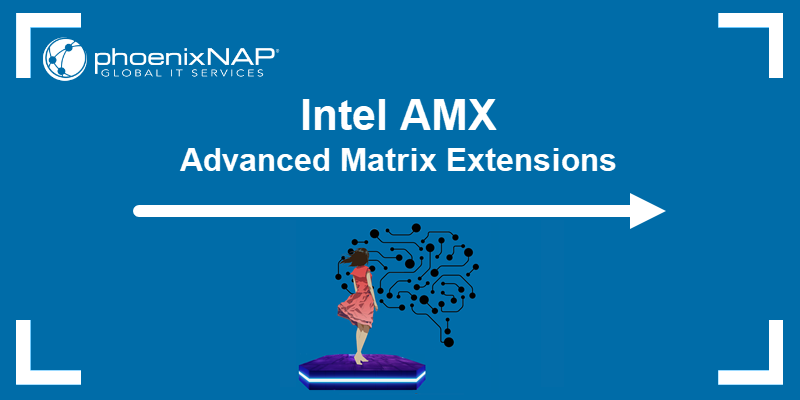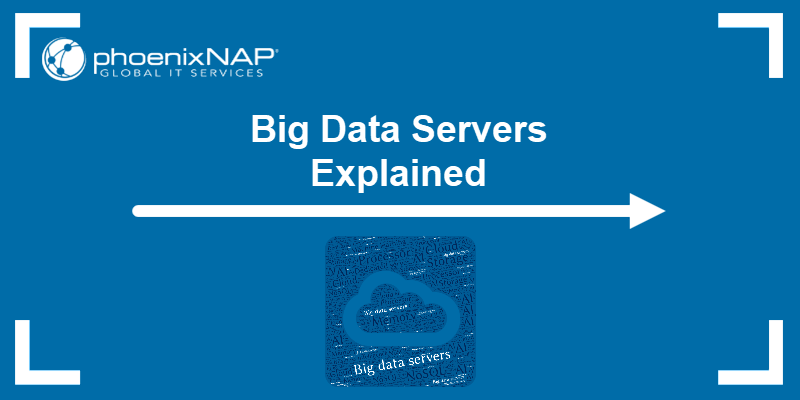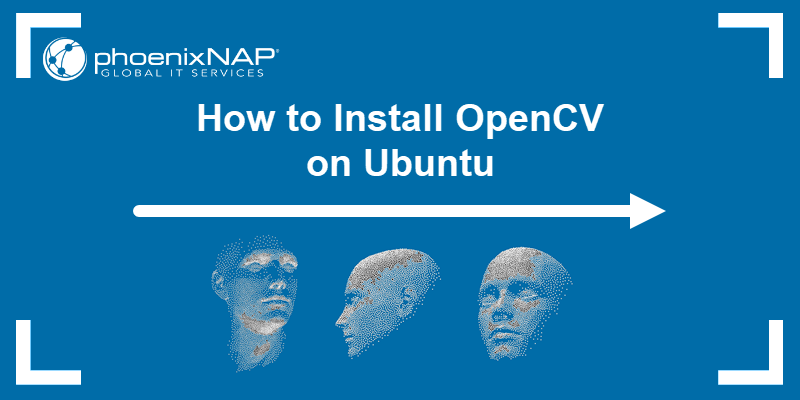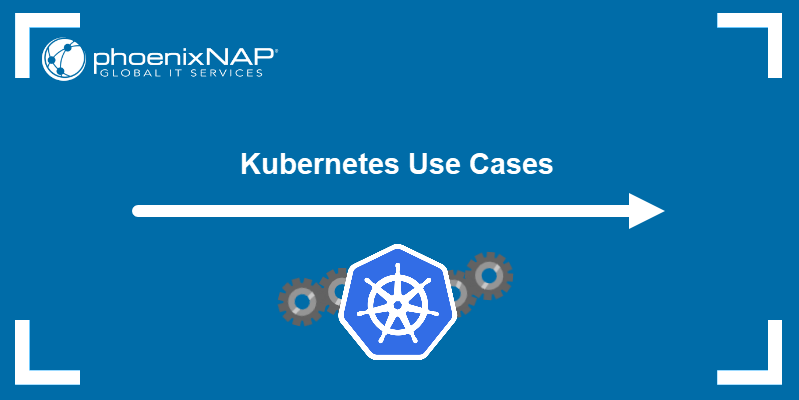HPC (high performance computing) uses robust computer systems and parallel processing techniques to solve complex computational problems. While not part of everyday computing, HPC is essential in academic research and various industries with high computation demands.
This article shows high performance computing applications and examples in various industries.
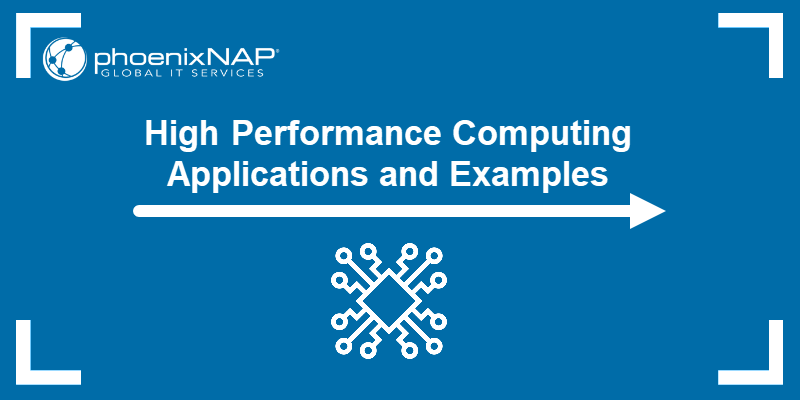
Top Industries Using High Performance Computing (HPC)
High performance computing (HPC) is a crucial technology for handling complex computations across different industries.
One sector harnessing the power of HPC is the academic and research domain. Universities and research institutions leverage HPC to conduct intricate simulations, analyze vast datasets, and facilitate groundbreaking scientific discoveries.
In the corporate realm, different industries have increasingly embraced HPC to enhance computational capabilities. The ability of HPC to process immense datasets in real-time empowers professionals to make informed decisions swiftly, contributing to the agility and competitiveness of each sector.
Additionally, the manufacturing industry capitalizes on HPC for advanced simulations, optimizing product designs, streamlining production processes, and ensuring product quality. These applications enhance overall efficiency and innovation in manufacturing practices.
The versatility of HPC underscores its pivotal role in shaping the future of advancements in academia, finance, manufacturing, healthcare, etc.
24 Examples of High Performance Computing (HPC) Applications
High performance computing has emerged as a transformative force across various industries. This advanced technology involves the parallel processing of extensive datasets, allowing for speed and efficiency in tackling complex problems.
From simulations and data analysis to cutting-edge research, HPC applications have become integral to pushing the boundaries of what's possible in healthcare, finance, manufacturing, and scientific research.
The following text describes the 24 most significant examples of HPC use cases in different industries.
Note: Learn more about HPC architecture and how HPC systems are optimized based on their application.
Entertainment and Media
HPC is essential in the entertainment and media industry. It is applied in various aspects, from creating special effects to enabling streaming.
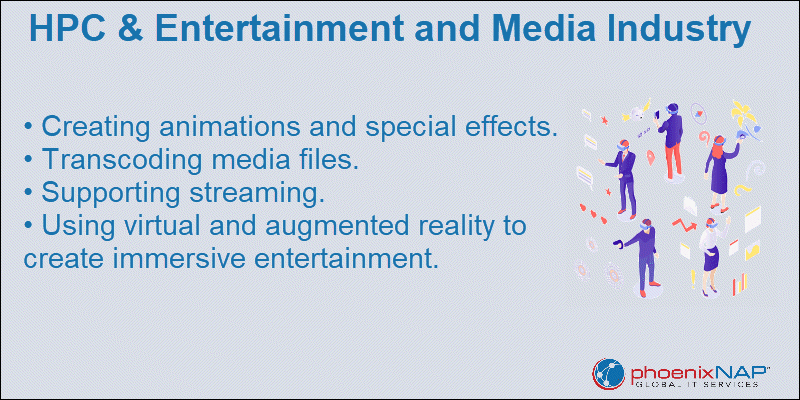
The following text covers real-life examples of HPC use in the entertainment and media industry.
1. Movie Special Effects
High performance computing is essential to the film industry, crafting special effects and computer-generated imagery (CGI). This technological prowess has been instrumental in producing blockbuster movies such as "Avatar" and "The Lord of the Rings," where HPC facilitates the creation of lifelike characters and visual environments.
HPC serves as the driving force behind the rendering of complex visual elements. Since special effects demand immense computational power, HPC handles these computations efficiently and quickly.
2. Augmented Reality and Virtual Reality
An example of using HPC in virtual and augmented reality is the CAVE (Cave Automatic Virtual Environment). The CAVE is a cube-shaped room with projection screens that provide users with an immersive virtual reality (VR) setting.
The CAVE is commonly employed for visualizing data in fluid dynamics, structural mechanics, architectural modeling, and media arts, offering a glimpse into the possibilities of working within a virtual reality realm.
HPC is also at the core of creating other immersive AR and VR experiences. Apps like Pokémon GO and Oculus Rift use high computational power to blend virtual elements with the real world.
Healthcare
Healthcare experts use HPC for various purposes, including improving screening techniques, making more accurate patient diagnoses, and streamlining administrative work.
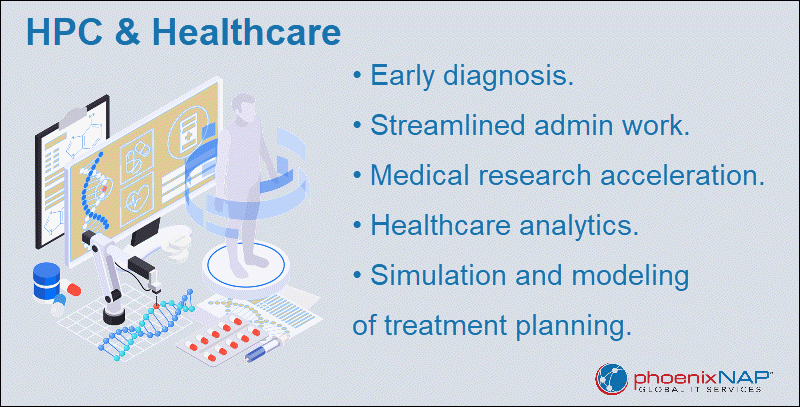
The following text delves into practical examples of how HPC changes the healthcare industry.
3. Rapid Cancer Diagnosis
Researchers use high performance computing in cancer treatment. In a project from 2017, scientists performed data analysis involving petabytes of information. The data was used to identify connections between a cancer patient's genome and tumor composition.
The project extended to characterizing and treating various cancer types, such as prostate, blood-related, liver, and skin cancers. This project requires computational power for research and ensuring the security of sensitive patient genomic datasets.
4. Early Cardiovascular Issues Diagnosis
In 2018, Google launched an HPC deep learning model to forecast cardiovascular disease risk. The project uses computer vision to analyze retinal images. This innovative technology analyzes blood vessels in an eye, providing insights that enable the prediction and identification of various risk indicators.
The program's primary objective is to contribute significantly to the early detection of cardiovascular issues. This early identification is paramount as it is crucial in preventive healthcare measures, helping discover cardiovascular issues before they advance.
Genomics
Sequencing the first human genome was a 13-year effort, completed in 2003. Since then, the process has undergone significant advancements thanks to HPC.
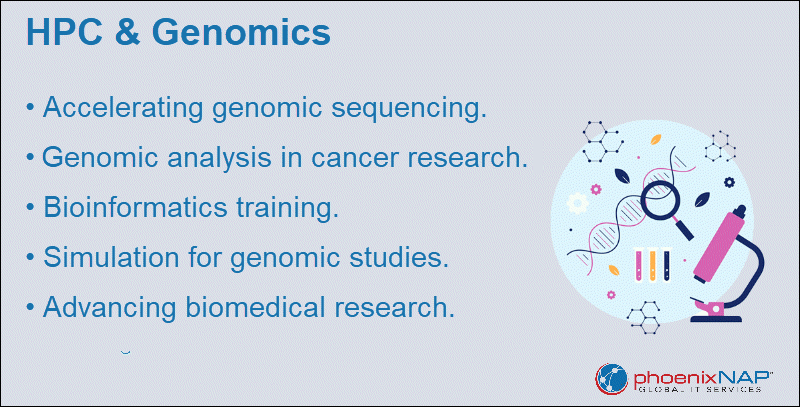
The following text elaborates on specific real-life examples of HPC in Genomics.
5. Genomic Sequencing
The Rady Children's Institute team can sequence a newborn's genome in under a day using an HPC technology called the DRAGEN. This tool set a Guinness World Record for genomic sequencing in 2018, finishing the task in 19.5 hours. The new record was 6.5 hours faster than the previous one.
6. Sequencing COVID-19 Genome
COVID-19 is a virus that mutates frequently. However, by simulating the virus's mode of action, researchers gained insights into its behavior.
Scientists explored the complete genome of COVID-19 on a CSIRO supercomputer in early 2020. The team successfully simulated how COVID-19 binds to human receptors. This breakthrough assisted in vaccine development and provided a template for future infections.
Pharmacology
Using HPC in pharmaceutical research and manufacturing is essential. Modern pharmacology relies on HPC to perform various simulations and predictions related to the effects of drugs in disease treatment.
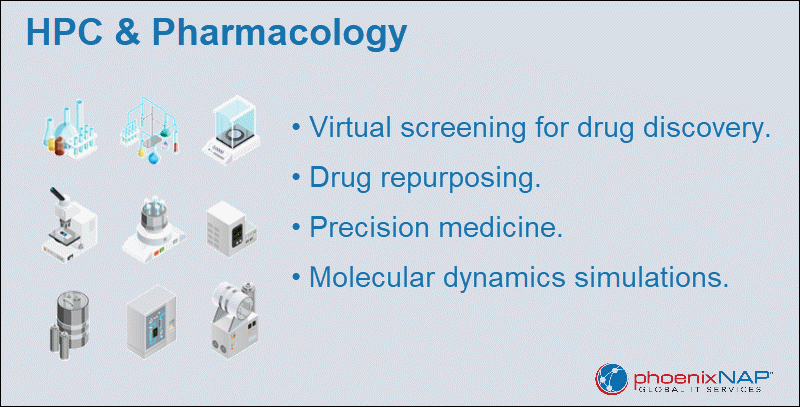
Some key examples are presented in the text below.
7. Drug Repurposing
High performance computing is crucial in drug repurposing (using existing drugs for treating new diseases). This process involves using HPC for large-scale virtual screening, enabling researchers to analyze and identify potential candidates for repurposing in massive amounts.
The utilization of HPC in drug repurposing is especially valuable in addressing rare diseases. Traditional drug development is time-consuming and costly, making research for uncommon diseases difficult. HPC streamlines this process by efficiently screening thousands of drugs, helping researchers identify promising candidates.
8. Developing Drugs for Cancer
Developing a new drug is time-consuming, complex, and expensive. The process takes 10 to 17 years, and success is not guaranteed. The production costs make it unaffordable for both pharmaceutical companies and patients. High performance computing significantly expedites potential drug molecule testing for developing drugs for cancer treatment.
HPC services help investigate various simulation data, which allows scientists to develop candidate drugs explicitly tailored for specific situations. By leveraging HPC resources, scientists focus on precision medicine, which enables the treatment of specific cancer types. As a result, patient care is enhanced and personalized.
Urban Planning
Major cities worldwide gather sensor data on weather, traffic, and noise levels. This data enables officials to make informed decisions like issuing smog warnings and optimizing public transportation schedules.
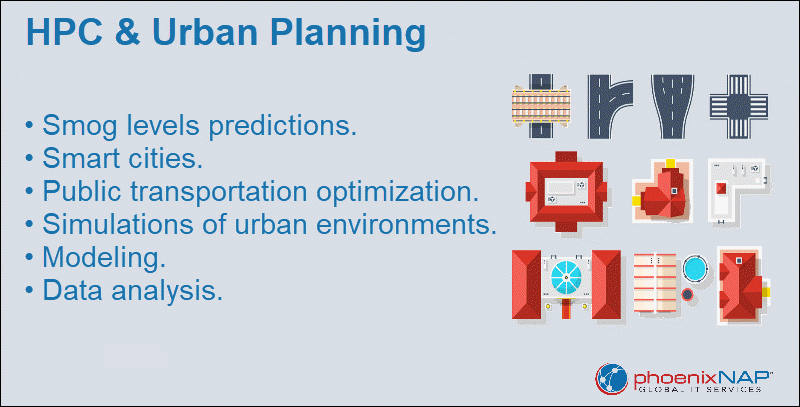
HPC use-case examples in urban planning are presented in the sections below.
9. The Array of Things Project
The Array of Things project deploys interconnected lampposts, forming a network of 500 sensors. These sensors aim to monitor diverse aspects related to climate and infrastructure. The sensors gather data such as temperature, light, barometric pressure, traffic conditions, and carbon monoxide levels.
To utilize this data, the sensors work together to process everything locally. This innovative approach forms a system that combines edge and high performance computing. The synergy between these approaches improves the project's efficiency and enables real-time data analysis and interpretation.
10. Optimizing Construction
HPC plays a crucial role in improving construction projects. It achieves this by simulating and optimizing various aspects, such as identifying optimal materials, streamlining transportation, and efficient power grid utilization.
Using HPC's planning capabilities improves project results. The effects include substantial eco-friendly and budget-friendly outcomes.
Oil and Gas
HPC is used in the Oil and Gas industry for various purposes, including testing reservoir models, identifying oil and gas resources, conducting spatial analyses, and performing fluid flow simulations.
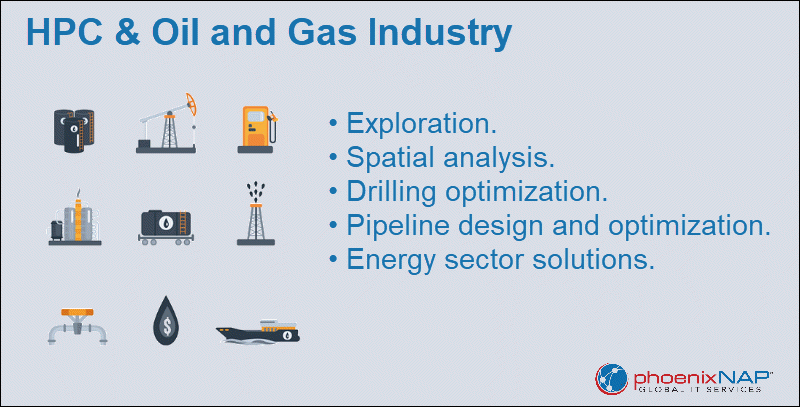
The following sections explain a few practical examples of HPC in the oil and gas industry.
11. Reservoir Simulation and Management
HPC is integral to the oil and gas industry for reservoir modeling. For instance, Chevron utilizes HPC to simulate complex reservoir behavior, optimize production strategies, and maximize oil recovery from fields.
HPC is also crucial in reservoir management because it optimizes production strategies. For instance, Saudi Aramco, the world's largest oil company, uses HPC to manage the oil reservoirs and enhance oil recovery techniques.
12. Exploration and Drilling
Oil and gas exploration companies use high performance computing to process geological data and identify potential reserves.
Additionally, HPC systems evaluate satellite imagery and Geographical Information Systems (GIS) data. This comprehensive analysis helps map potential drilling locations and optimize logistical operations.
Aerospace Industry
High performance computing is essential in advancing the aerospace industry. It influences aircraft design and manufacturing processes in various ways.
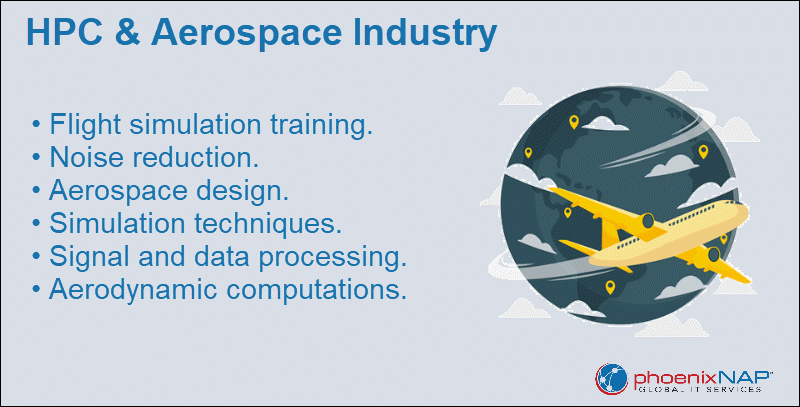
The following section includes real-life examples of HPC use in this industry.
13. Flight Simulation Training
HPC is essential for creating realistic flight simulators used in pilot training. Companies leverage HPC to develop accurate flight training experiences. As a result, pilots have a safe and effective way to experience various flight scenarios.
HPC also aids in creating tests and simulating flight control systems, ensuring aircraft has safe and precise control.
14. Simulia
Simulia is a simulation software powered by HPC and developed by Dassault Systèmes. The software employs computational fluid dynamics to replicate aircraft flight conditions. Simulia enables engineers to monitor flight conditions and adjust aircraft design based on simulation results.
The program's applications span various scenarios, from simulating commercial aircraft conditions to military defense. Simulations significantly reduce production costs and time by minimizing the need for physical testing.
15. Fuel Efficiency
When designing an airplane, one critical aspect is efficient fuel usage. Engineers focus on reducing the aircraft's weight to address this issue. These processes use HPC to run extensive optimization computations.
In Boeing, scientists used improvised HPC to shed more than 200 pounds from the 787 model, saving the company over $200 million.
Automotive
High performance computing is instrumental in revolutionizing various aspects of the automotive industry, from crash test simulation to self-driving cars.
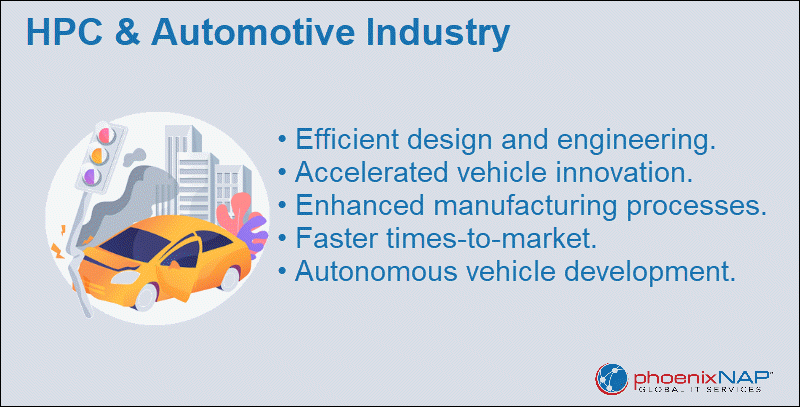
The following sections show HPC uses in the automotive industry.
16. Self-Driving Cars
Operating a driverless vehicle requires complex algorithms and accurate real-time calculations. Autonomous trucks and cars must operate without delays, demanding a highly responsive system. The primary goal of developing self-driving cars is to reduce road accidents and make accurate navigation predictions.
Through machine learning algorithms, self-driving vehicles determine how to react to signs and how to avoid hazards. Some of these methods are backed by high performance computing. Microsoft's Azure HPC technology is crucial in performing tasks like perception validation, decision-making, and crash test simulations.
17. Vehicle Safety Testing and Crashworthiness Analysis
Automotive manufacturers like Ford use HPC to simulate crash tests and evaluate vehicle safety. These simulations help estimate how vehicles respond to crash scenarios, enabling manufacturers to design safer cars. The process is also cheaper than real-life crash tests.
General Motors (GM) uses HPC for crashworthiness analysis, simulating and analyzing how a vehicle's structure and safety systems perform during collisions. HPC accelerates the assessment of vehicle safety in various crash conditions.
Toyota uses HPC to simulate airbag deployments during crashes. These simulations help refine airbag designs, ensuring they deploy effectively and protect occupants in accidents.
Financial services
High performance computing is highly beneficial in the financial services industry. This advanced technology is used for various procedures, including automated trading, fraud identification, and monitoring real-time stock trends.
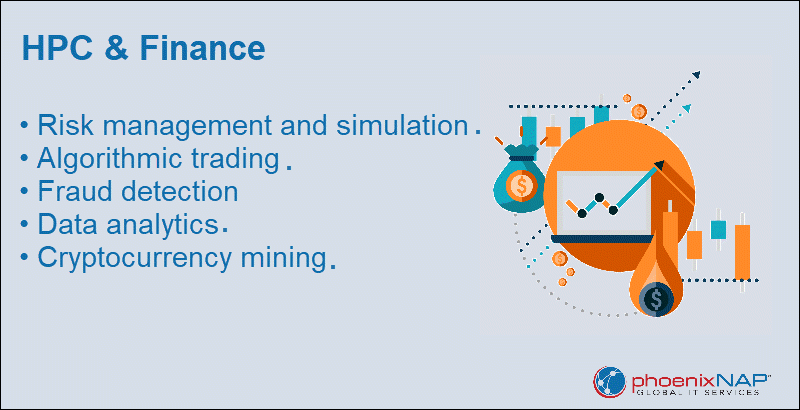
The following text elaborates on two HPC use cases in this area.
18. Fraud Detection with AI
Mastercard employs HPC systems to enhance real-time fraud detection in financial transactions. The company significantly improves its ability to detect fraudulent activities by leveraging machine learning algorithms. This approach involves using advanced analytics and artificial intelligence (AI) to analyze vast datasets and identify patterns found in fraudulent activities.
19. Cryptocurrencies
Cryptocurrency mining is a process tied to solving complex computational mathematical problems. The successful resolution of these problems triggers an algorithm that generates and deposits new cryptocurrency into the computer owner's account.
The computational complexity behind these algorithms surpasses the capabilities of personal computers. In response, miners have adopted a collaborative approach, pooling hardware resources and combining individual desktops to create improvised multi-core HPC setups.
Meteorology
High performance computing significantly improves weather pattern prediction and tracking. It enhances the accuracy of climate models, providing more precise predictions of weather conditions.
Additionally, HPC contributes to a better understanding of the causes and consequences of various meteorological events.
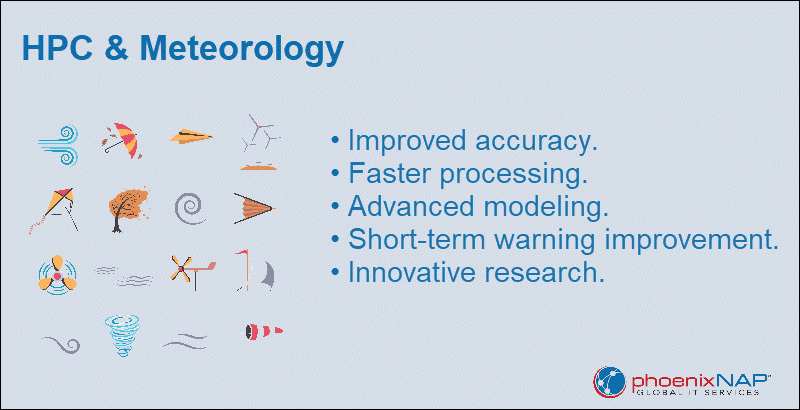
The sections below take a deeper look at how HPC affects meteorology and weather prediction.
20. Solar Weather Monitoring
Solar weather impacts spacecraft launches, satellites, and stations. It also affects Earth's communication systems. NASA utilizes high performance computing to remotely monitor the sun's extreme ultraviolet radiation, which triggers solar flares.
NASA's Frontier Development Lab researchers used high performance computing to train a deep-learning algorithm to predict solar flares. They trained it on images of the sun taken from an orbiting observatory. As a result, the algorithm now provides more precise inferences about solar weather compared to earlier models.
21. Tornado Visualisation
High performance computing is instrumental in tornado visualizations, offering advanced capabilities for scientific simulations and understanding complex meteorological phenomena.
Researchers leveraged HPC to create a user-friendly interface for real-time tornado data monitoring without downloading large datasets. This approach allows researchers to actively evaluate the ongoing process and gain insights into tornado dynamics as they unfold.
22. Climate Simulation
In 2014, the Swiss National Supercomputing Centre (CSCS) launched a hybrid supercomputer, initiating a climate simulation project in Europe.
The primary focus of these simulations was modeling cloud formations. The results lead to early storm warnings, long-term climate projections, and the forming strategies regarding climate change. These efforts require substantial computing power, a demand efficiently met by HPC resources.
Space Research
The space industry uses cutting-edge technology to manage vast datasets. High performance computing emerges as a natural solution due to the capacity for modeling, simulating, analyzing, and facilitating decision-making in space exploration.
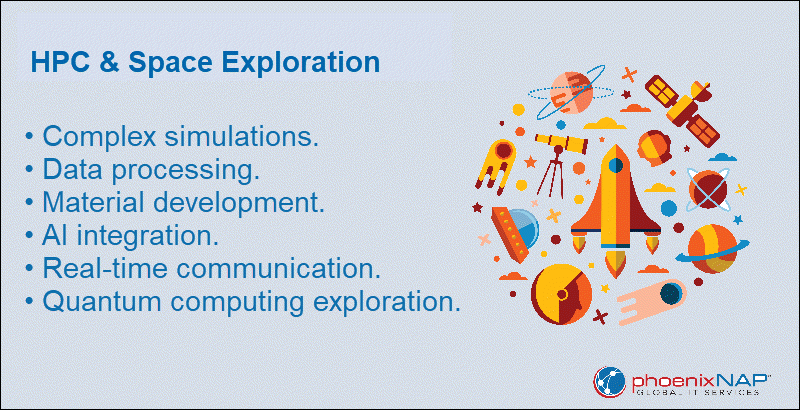
The following text goes into specific examples to show the practical applications of HPC in this field.
23. CMB Analysis
In Cosmic Microwave Background (CMB) analysis, the POLARBEAR project and its successor, the Simons Array project, leveraged the powerful Gordon supercomputer—one of the world's first supercomputers.
Researchers at the University of California San Diego employed the Gordon supercomputer to handle high data loads in the project. This HPC resource was pivotal in executing extensive optimization functions, conducting data analysis, and uncovering valuable insights within the universe's Cosmic Microwave Background (CMB).
24. Neutrino Masses Analysis
Scientists employ high performance computing to enhance observational accuracy and simulate cosmic events of the Big Bang. This analysis delves into modeling massive neutrinos in cosmology, providing crucial insights into cosmological studies.
The NuMass project utilized the Curie supercomputer to investigate neutrino masses in large-scale cosmological structures. The project involved creating a precise universe simulation to describe specific regions better. Researchers use decade-long simulations to compare and evaluate results against real-world observations and measurement data.
Conclusion
After reading this article, you now know everything about the top industries using HPC. Next, learn about the connection between HPC and AI.
